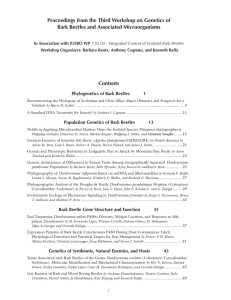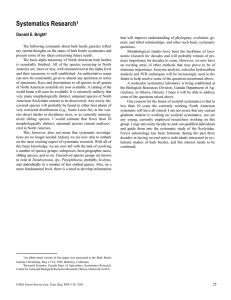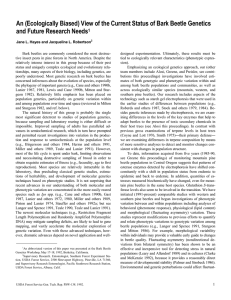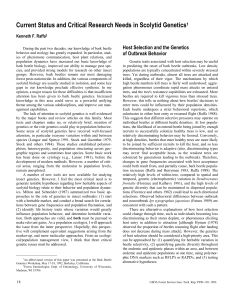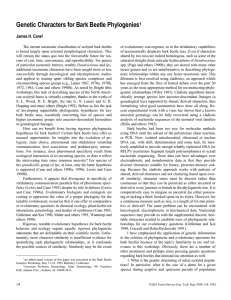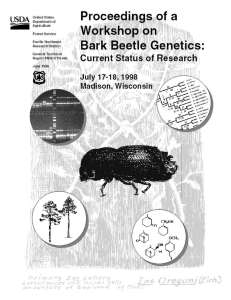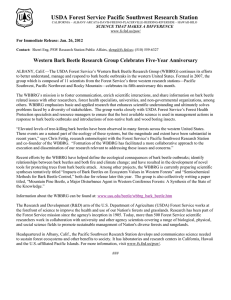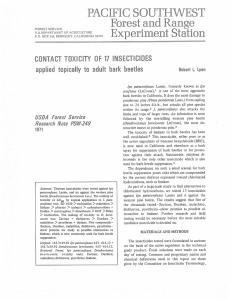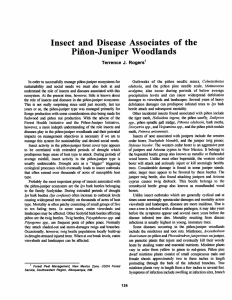Bark Beetle Genetics―an Overview Stephen Teale and Barbara Hager 1
advertisement
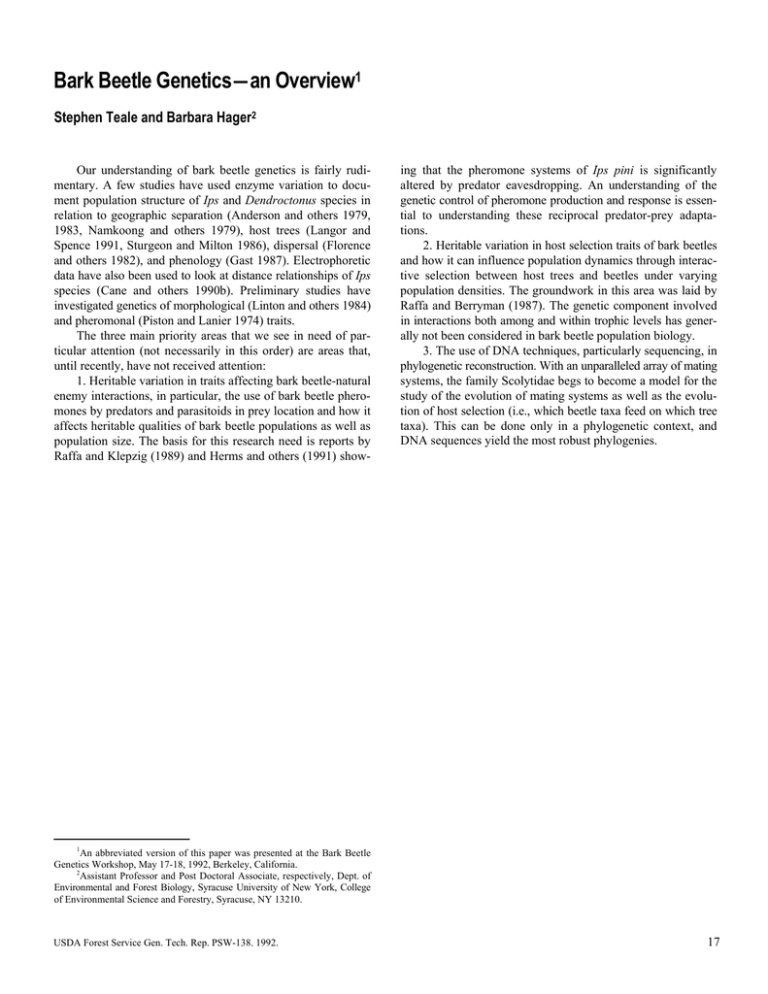
Bark Beetle Genetics―an Overview1 Stephen Teale and Barbara Hager2 Our understanding of bark beetle genetics is fairly rudi­ mentary. A few studies have used enzyme variation to docu­ ment population structure of Ips and Dendroctonus species in relation to geographic separation (Anderson and others 1979, 1983, Namkoong and others 1979), host trees (Langor and Spence 1991, Sturgeon and Milton 1986), dispersal (Florence and others 1982), and phenology (Gast 1987). Electrophoretic data have also been used to look at distance relationships of Ips species (Cane and others 1990b). Preliminary studies have investigated genetics of morphological (Linton and others 1984) and pheromonal (Piston and Lanier 1974) traits. The three main priority areas that we see in need of par­ ticular attention (not necessarily in this order) are areas that, until recently, have not received attention: 1. Heritable variation in traits affecting bark beetle-natural enemy interactions, in particular, the use of bark beetle phero­ mones by predators and parasitoids in prey location and how it affects heritable qualities of bark beetle populations as well as population size. The basis for this research need is reports by Raffa and Klepzig (1989) and Herms and others (1991) show- ing that the pheromone systems of Ips pini is significantly altered by predator eavesdropping. An understanding of the genetic control of pheromone production and response is essen­ tial to understanding these reciprocal predator-prey adapta­ tions. 2. Heritable variation in host selection traits of bark beetles and how it can influence population dynamics through interac­ tive selection between host trees and beetles under varying population densities. The groundwork in this area was laid by Raffa and Berryman (1987). The genetic component involved in interactions both among and within trophic levels has gener­ ally not been considered in bark beetle population biology. 3. The use of DNA techniques, particularly sequencing, in phylogenetic reconstruction. With an unparalleled array of mating systems, the family Scolytidae begs to become a model for the study of the evolution of mating systems as well as the evolu­ tion of host selection (i.e., which beetle taxa feed on which tree taxa). This can be done only in a phylogenetic context, and DNA sequences yield the most robust phylogenies. 1 An abbreviated version of this paper was presented at the Bark Beetle Genetics Workshop, May 17-18, 1992, Berkeley, California. 2 Assistant Professor and Post Doctoral Associate, respectively, Dept. of Environmental and Forest Biology, Syracuse University of New York, College of Environmental Science and Forestry, Syracuse, NY 13210. USDA Forest Service Gen. Tech. Rep. PSW-138. 1992. 17


